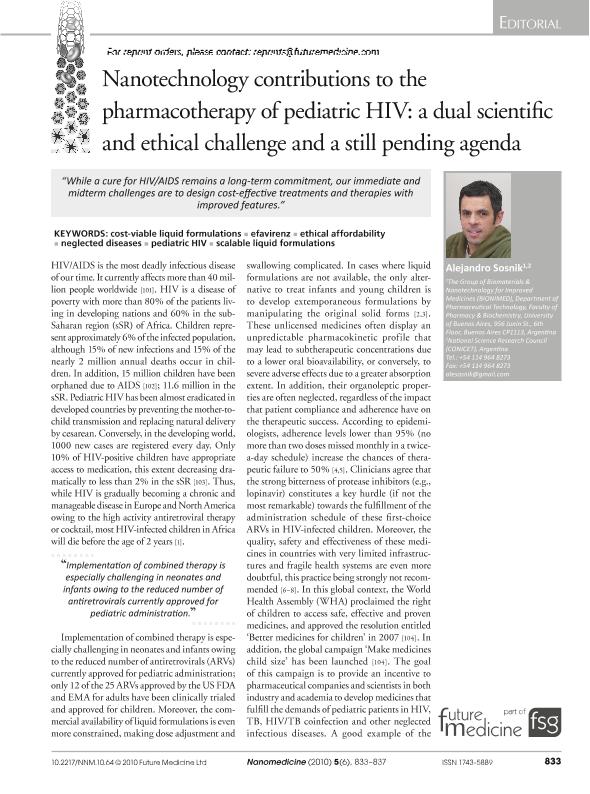Artículo
Nanotechnology contributions to the pharmacotherapy of pediatric HIV: a dual scientific and ethical challenge and a still pending agenda
Fecha de publicación:
08/2010
Editorial:
Future Medicine
Revista:
Nanomedicine
ISSN:
1743-5889
Idioma:
Inglés
Tipo de recurso:
Artículo publicado
Clasificación temática:
Resumen
The Human Immunodeficiency Virus (HIV)/Acquired Immunodeficiency Syndrome (AIDS) is the most deadly infectious disease of our times. It currently affects more than 40 million people worldwide [101]. HIV is a disease of poverty as more than 80% of the patients live in developing nations and 60% in the sub-Saharan region (sSR) of Africa. Children represent approximately 6% of the infected population, though 15% of the new infections and the 15% of the nearly 2 million annual deaths. In addition, 15 million children have been orphaned due to AIDS [102]; 11.6 millions only in the sSR. Pediatric HIV has been almost eradicated in developed countries by preventing the mother-to-child-transmission (MTCT) and replacing natural delivery by caesarean. Conversely, in the developing world, 1000 new cases are registered every day. Only 10% of the HIV-positive children have appropriate access to medication, this extent decreasing dramatically to less than 2% in the sSR [103]. Thus, while HIV is gradually becoming a chronic and manageable disease in Europe and North America owing to the high activity antiretroviral therapy (HAART) or cocktail, most HIV-infected children in Africa are unfortunately sentenced to die before the two years of age.
Archivos asociados
Licencia
Identificadores
Colecciones
Articulos(OCA HOUSSAY)
Articulos de OFICINA DE COORDINACION ADMINISTRATIVA HOUSSAY
Articulos de OFICINA DE COORDINACION ADMINISTRATIVA HOUSSAY
Citación
Sosnik, Alejandro Dario; Nanotechnology contributions to the pharmacotherapy of pediatric HIV: a dual scientific and ethical challenge and a still pending agenda; Future Medicine; Nanomedicine; 5; 6; 8-2010; 833-837
Compartir
Altmétricas




